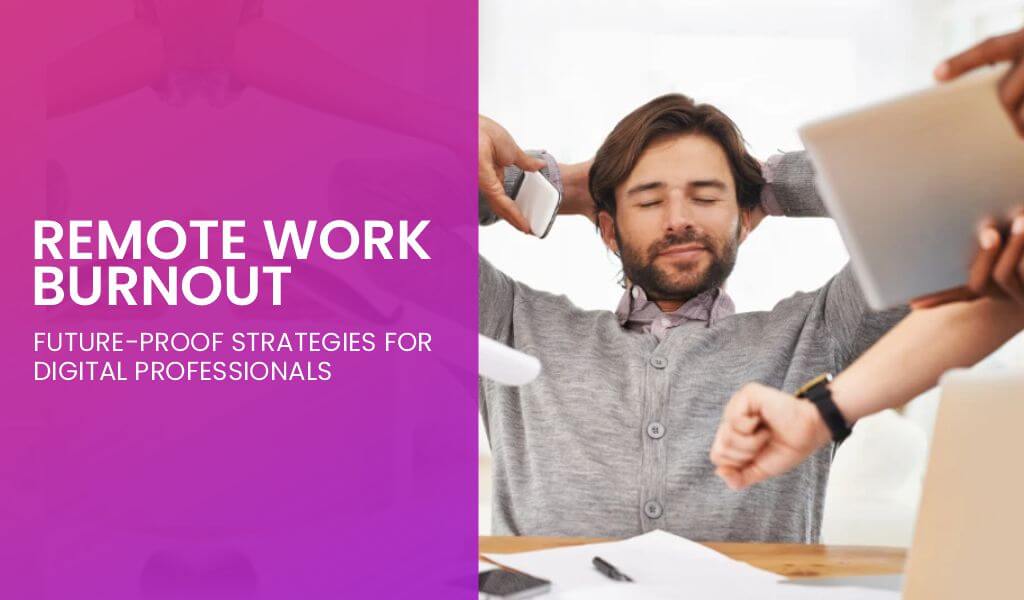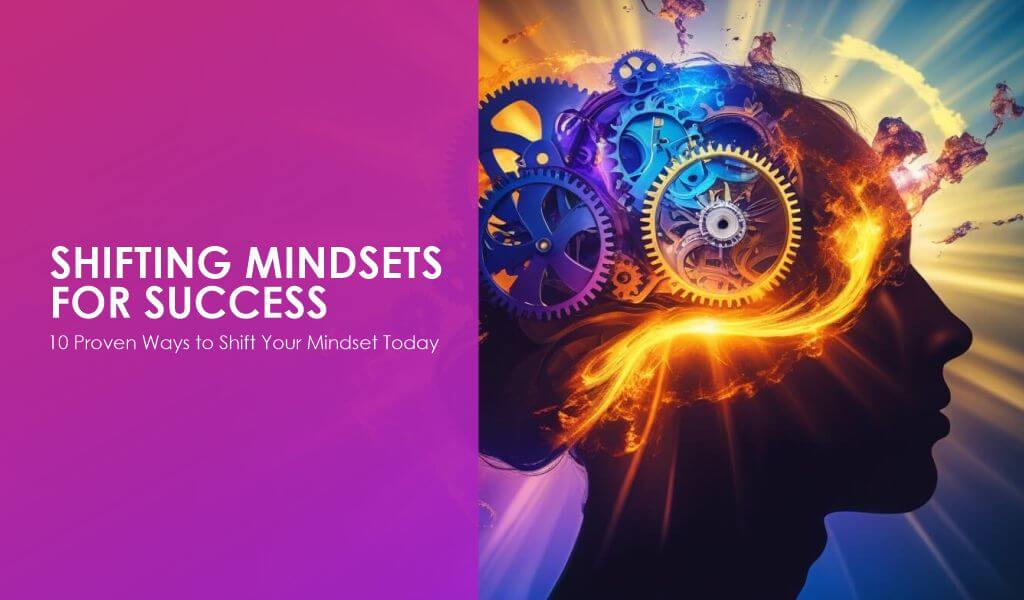
Remote Work Burnout: Future-Proof Strategies for Digital Professionals
Remote work has transformed the way we live and work. The idea of managing your day from anywhere—whether it’s a home office, a café, or a quiet beach—sounds like the dream setup for digital professionals. But for many, the reality looks different. Endless screen time, blurred work-life boundaries, and the constant pressure to stay “available” can turn that dream into exhaustion.
If you’ve ever felt mentally drained despite working from your ideal setup, you’re not alone. Remote work burnout is real, and it’s becoming one of the biggest challenges for modern professionals. The good news is that it’s preventable. In this article, we’ll look at practical, future-proof strategies to help digital professionals stay productive, motivated, and mentally healthy while working remotely.
1. Understanding Remote Work Burnout
Before addressing burnout, it’s important to understand what it actually looks like. Remote work burnout isn’t just about feeling tired—it’s a mix of emotional exhaustion, reduced performance, and a sense of detachment from work.
The signs are often subtle at first:
- You feel drained even after a full night’s rest.
- Small tasks feel overwhelming.
- You find it harder to concentrate or care about results.
- Your boundaries between “work time” and “personal time” start fading.
What makes remote work burnout tricky is that it hides behind productivity. Many digital professionals push through fatigue because they feel they’re getting more done. But long hours without proper rest only delay the inevitable crash.
A survey by Indeed found that 67% of workers believe burnout has worsened since remote work became the norm. The flexibility that once felt liberating can become a trap when work seeps into every part of your day.
2. Redefine Work-Life Boundaries
The biggest cause of burnout in remote work isn’t workload—it’s the absence of clear boundaries. When your home doubles as your office, it’s easy to stay logged in “just a bit longer.”
To future-proof your work routine, treat boundaries like business priorities.
Set a start and end time:
Decide when your workday begins and ends. Communicate these hours to your team or clients. This simple structure signals your brain when to switch between work and rest.
Create a physical workspace:
Even if it’s a corner desk, designate a space only for work. The physical separation helps your mind transition between “office mode” and “home mode.”
Use digital tools wisely:
Turn off work notifications after hours. Apps like Slack, Teams, and Gmail let you customize “Do Not Disturb” settings. Use them. It’s not about ignoring your team—it’s about protecting your recovery time.
A designer I know, for instance, used to take calls at all hours for international clients. He eventually burned out. Now, he uses a simple rule: if it’s after 6 p.m., it waits until tomorrow. His creativity, focus, and mood improved dramatically.
3. Prioritize Mental Health Like a Project
Digital professionals are great at managing projects, but not always their own well-being. Think of mental health as a project that needs regular check-ins, deadlines, and maintenance.
Schedule breaks intentionally:
The human brain can focus deeply for about 90 minutes at a stretch. After that, performance drops. Try the “90/20 rule”—work for 90 minutes, rest for 20. During that time, move, stretch, or step outside.
Start your day without screens:
Checking emails or messages first thing in the morning puts you in reaction mode. Instead, begin with a short walk, a few minutes of journaling, or simply a quiet breakfast.
Don’t skip social interaction:
Loneliness is one of remote work’s silent stressors. Make it a point to connect with colleagues or friends regularly, even if it’s virtual. A quick chat can lift your mood and remind you that you’re not working in isolation.
Mindfulness also helps. You don’t need to meditate for hours—five minutes of breathing or gratitude journaling can reset your focus. Many digital professionals use apps like Headspace or Calm for daily check-ins.
4. Design Your Day Around Energy, Not Hours
One of the biggest myths of productivity is that more hours equal more results. In reality, performance depends more on how you manage your energy than your time.
Track your energy peaks:
Pay attention to when you feel most alert. For some, it’s early morning; for others, it’s late afternoon. Align your toughest tasks—like strategy work or creative brainstorming—with your high-energy periods.
Batch similar tasks:
Switching between emails, design work, and calls kills focus. Instead, group similar tasks. Spend a block of time handling communications, another for creative work, and another for planning.
Include “white space” in your calendar:
Not every minute needs to be scheduled. Leave gaps between meetings or projects to think, reset, or simply breathe. The best ideas often appear in those unscheduled moments.
For example, a freelance developer I worked with started blocking two “no-meeting” afternoons per week. He used that time for focused coding or learning new tools. His burnout dropped, and his output improved by 30%.
5. Reconnect With Purpose and Progress
Burnout often stems from a loss of meaning. When every day feels like another Zoom marathon, it’s easy to forget why you’re doing what you do.
To stay motivated long-term, reconnect with your purpose. Ask yourself:
- What impact does my work have?
- How does this project help others or my own growth?
- What part of this job still excites me?
Keeping a visible reminder—like a note on your desk or a digital mood board—can reignite that motivation.
Also, track your progress beyond just deliverables. Keep a simple “wins” journal where you note daily or weekly achievements, even small ones. Seeing progress in writing reinforces a sense of accomplishment and helps offset fatigue.
One remote marketer told me she started writing three “good things” about her workday before logging off. Over time, she noticed she ended her day with less stress and more satisfaction.
6. Build Physical Health Into Your Remote Routine
Your body and mind work as a team. If one is neglected, the other eventually suffers. Remote professionals often underestimate how sedentary their work has become.
Move often:
Set reminders to stand, stretch, or take short walks. If possible, invest in a standing desk or a compact treadmill. Movement boosts blood flow and reduces mental fog.
Eat with awareness:
When working from home, it’s easy to snack endlessly or skip meals. Try meal prepping once a week or keeping healthy snacks nearby. Foods rich in omega-3, protein, and fibre support sustained energy levels.
Sleep like it’s non-negotiable:
Late-night emails or binge-watching after work can disrupt sleep quality. Prioritise 7–8 hours of rest and maintain a consistent bedtime routine. A well-rested brain makes better decisions and handles stress more effectively.
Many digital professionals overlook fitness because it feels like “extra work.” But treating exercise as part of your job—because it fuels your performance—changes that mindset.
7. Future-Proofing: Sustainable Remote Work Habits
Burnout prevention isn’t about quick fixes; it’s about building a sustainable routine that adapts to your life and career. Here are some ways to future-proof your remote work habits:
Keep learning:
Skill stagnation can make remote work feel repetitive. Schedule time to learn new tools, attend webinars, or read industry insights. Growth keeps your mind engaged and your work fresh.
Experiment with flexibility:
You don’t have to follow the same routine forever. Try different work setups—coworking spaces, hybrid models, or new productivity methods. Adaptation keeps burnout at bay.
Set long-term boundaries:
Learn to say no when necessary. Protecting your mental bandwidth ensures you can sustain your career for years—not just months.
Plan real breaks:
Digital professionals often skip vacations, thinking they’ll lose momentum. In reality, stepping away resets your creativity. Even a few days offline can make a massive difference.
Future-proofing remote work means creating a lifestyle where productivity and wellbeing can coexist. You don’t need to be constantly “on” to stay successful—you just need a system that respects your limits.
Conclusion: Work Smarter, Live Healthier
Remote work has given digital professionals unprecedented freedom, but it also requires new forms of discipline. Burnout isn’t a sign of weakness—it’s a signal that your current system needs adjustment.
By redefining boundaries, prioritising mental and physical health, managing energy effectively, and reconnecting with purpose, you can build a career that’s both productive and sustainable.
Remember, the future of remote work isn’t just about technology—it’s about people. The most successful professionals will be those who learn to work with their energy, not against it.
So, take a step back today. Review your habits, schedule breaks, and reset your goals. Your work—and your wellbeing—will thank you for it.
Post a comment Cancel reply
Related Posts
Ways to Support a Loved One Experiencing Emotional Trauma
Emotional trauma can leave lasting scars that aren’t always visible. Whether it stems from a…
Conscious Polyamory & Ethical Non-Monogamy: Modern Relationship Paradigms
Conscious Polyamory & Ethical Non-Monogamy: Modern Relationship Relationships are changing. More people today are questioning…
Parenting Digital Natives: Mental Health for Gen Alpha
Parenting Digital Natives: Mental Health for Gen Alpha There’s no denying it—our kids are growing…
Shifting Mindsets for Success: 10 Proven Ways to Shift Your Mindset Today
10 Proven Ways to Shift Your Mindset Today Success often begins long before you see…







